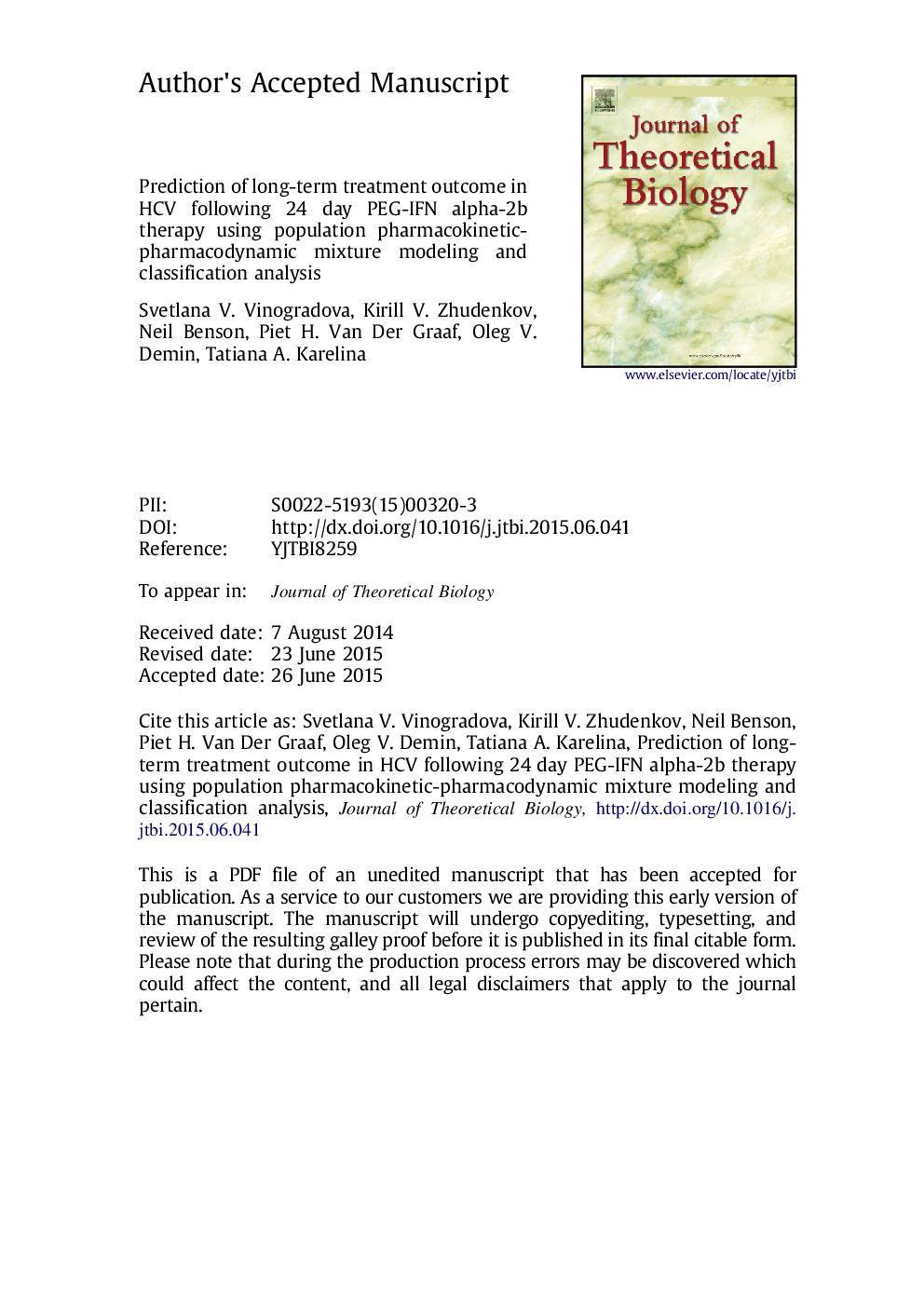| Article ID | Journal | Published Year | Pages | File Type |
|---|---|---|---|---|
| 6369517 | Journal of Theoretical Biology | 2015 | 33 Pages |
Abstract
Mathematical models have been widely used for understanding the dynamics of the hepatitis C virus (HCV). We propose a method to predict final clinical outcome for 24 HIV-HCV - coinfected patients with the help of a mathematical model based on the first two weeks of PEG-IFN therapy. Applying a pharmacokinetic-pharmacodynamic (PKPD) approach, together with mixture models, to the adapted model of viral dynamics developed by Neumann et al., we have analyzed the influence of PEG-IFN on the kinetics and interaction of target cells, infected cells and virus mRNA. It was found that PEG-IFN pharmacokinetic parameters were similar in sustained virological responders and nonresponders, while the plasma PEG-IFN concentration that decreases HCV production by 50% (EC50) and the rate of infected cell death were different. The treatment outcome depended mainly on the initial viral mRNA concentration and the rate of infected cell death. The population PKPD approach with a mixture model enabled the determination of individual PKPD parameters and showed high sensitivity (93.5%) and specificity (97.4%) for the prediction of the treatment outcome.
Keywords
Related Topics
Life Sciences
Agricultural and Biological Sciences
Agricultural and Biological Sciences (General)
Authors
Svetlana V. Vinogradova, Kirill V. Zhudenkov, Neil Benson, Piet H. Van Der Graaf, Oleg V. Demin, Tatiana A. Karelina,
